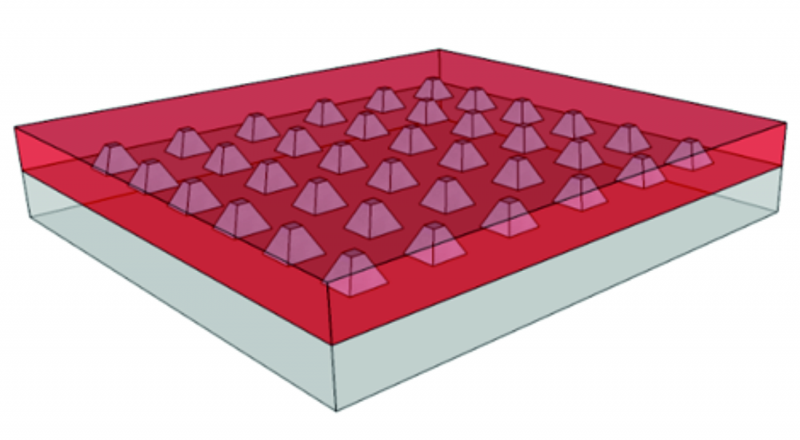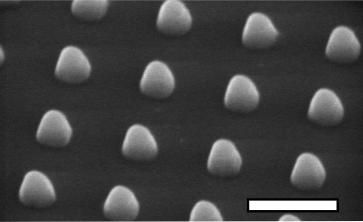Split light wave switches nano-enhancers of light on and off

In collaboration with Philips Lighting, researchers from the FOM institutes AMOLF and DIFFER have found a way to switch the antenna effect of metal nanoparticles on and off. Nanoantennae are sensitive receivers and enhancers of light with applications in medical sensors, lighting and improved solar cells.
In Physical Review Letters, the research group of Jaime Gomez-Rivas describes how they coherently controlled nanoantennae to optimally receive light and minimise the light wasted by using accurately phased light waves.
Nanophotonics
Metal nanoparticles, billionths of metres in size, respond particularly strongly to light. The researchers specialise in] nanophotonics, where such surprising effects are possible. The electrons on the metal surface move along with light in the surroundings. Therefore, metal nanoparticles can act as nanoantennae and receive and transmit light.
Nanoparticles enhance light but also waste it
In the PRL publication, the team describes how a lattice of metal pyramids, tens of nanometres in size, influences the light received by the surrounding fluorescent molecules. Fluorescent molecules absorb light from one wavelength and emit light at another wavelength. They are used to develop white LED lights, for example.
If the emission of the molecules is enhanced by metal nanoantennae, they emit a higher intensity of light in certain directions. At the same time, such nanoantennae are so sensitive that they also absorb the light that should provide the fluorescent molecules with energy. Consequently up to 50 percent of the incoming energy is lost.

Switch
For a long time, it was thought that the antenna effect of nanoparticles was an intrinsic characteristic that could not be switched on or off. Ph.D. researcher Giuseppe Pirruccio (AMOLF and UNAM) nevertheless managed to modulate the antennae effect by splitting up the incoming light waves. If the crest of one light wave coincides with the trough of the other, the nanoantennae stop functioning while the fluorescent molecules in their vicinity can still acquire energy. "The fluorescent molecules briefly need the time to convert the incoming light and emit this," says fellow researcher Mohammad Ramezani. "Via this setup you can switch off the disruptive nanoantennae effect while you supply energy without switching off the mechanism that enhances the light emitted."
More information: Coherent control of the optical absorption in a plasmonic lattice coupled to a luminescent layer, Giuseppe Pirruccio, Mohammad Ramezani, Said Rahimzadeh-Kalaleh Rodriguez et al, Phys. Rev. Lett. 116, 103002. arxiv.org/abs/1601.04611
Journal information: Physical Review Letters
Provided by Fundamental Research on Matter (FOM)



















